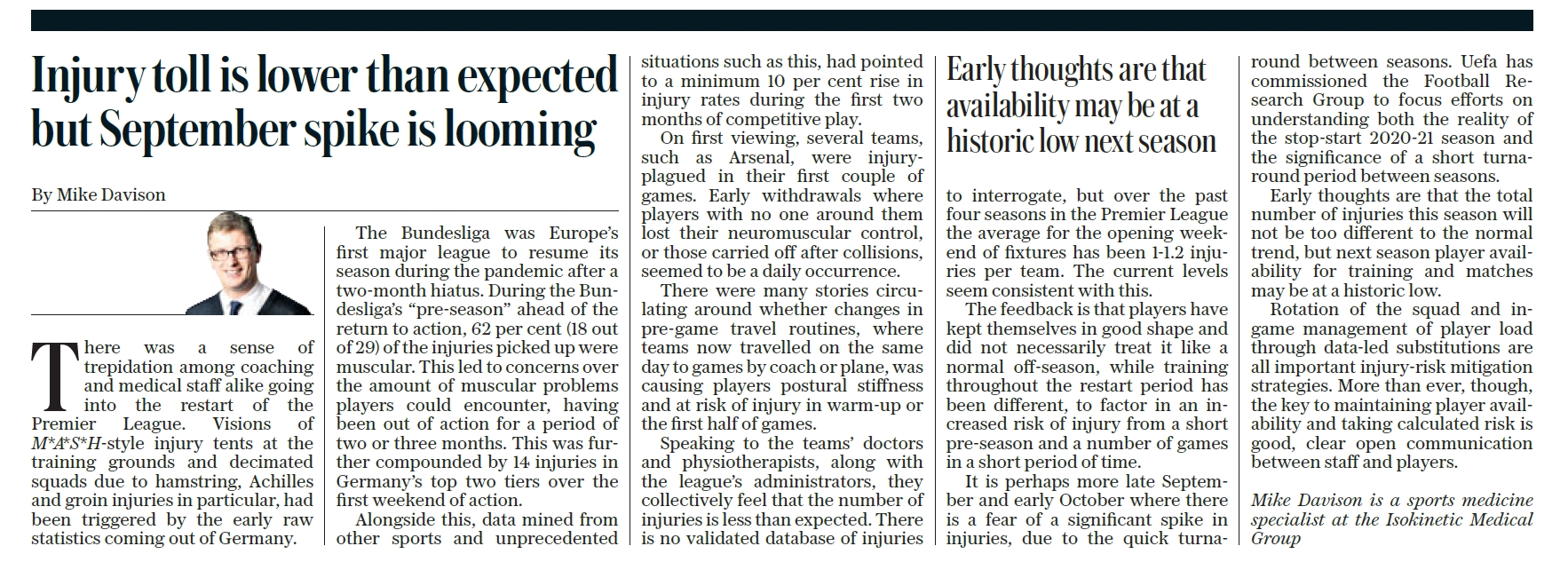
There was a sense of trepidation among coaching and medical staff alike going into the restart of the Premier League. Visions of M*A*S*H-style injury tents at the training grounds and decimated squads due to hamstring, Achilles and groin injuries in particular, had been triggered by the early raw statistics coming out of Germany.
The Bundesliga was Europe’s first major league to resume its season during the pandemic after a two-month hiatus. During the Bundesliga’s “pre-season” ahead of the return to action, 62 per cent (18 out of 29) of the injuries picked up were
muscular. This led to concerns over the amount of muscular problems players could encounter, having been out of action for a period of two or three months. This was further compounded by 14 injuries in Germany’s top two tiers over the
first weekend of action. Alongside this, data mined from other sports and unprecedented situations such as this, had pointed to a minimum 10 per cent rise in injury rates during the first two months of competitive play.
On first viewing, several teams, such as Arsenal, were injuryplagued in their first couple of games. Early withdrawals where players with no one around them lost their neuromuscular control, or those carried off after collisions, seemed to be a daily occurrence. There were many stories circulating around whether changes in
pre-game travel routines, where teams now travelled on the same day to games by coach or plane, was causing players postural stiffness and at risk of injury in warm-up or the first half of games. Speaking to the teams’ doctors and physiotherapists, along with the league’s administrators, they collectively feel that the number of injuries is less than expected. There is no validated database of injuries to interrogate, but over the past four seasons in the Premier League the average for the opening weekend of fixtures has been 1-1.2 injuries per team. The current levels seem consistent with this. The feedback is that players have kept themselves in good shape and did not necessarily treat it like a normal off-season, while training throughout the restart period has been different, to factor in an increased risk of injury from a short pre-season and a number of games in a short period of time. It is perhaps more late September and early October where there is a fear of a significant spike in injuries, due to the quick turnaround between seasons. Uefa has commissioned the Football Research Group to focus efforts on understanding both the reality of the stop-start 2020-21 season and the significance of a short turnaround period between seasons.
Early thoughts are that the total number of injuries this season will not be too different to the normal trend, but next season player availability for training and matches may be at a historic low. Rotation of the squad and ingame management of player load through data-led substitutions are all important injury-risk mitigation strategies. More than ever, though, the key to maintaining player availability and taking calculated risk is good, clear open communication between staff and players.
By Mike Davison, Head of International of Isokinetic Medical Group
Published: Saturday 4 July 2020 The Daily Telegraph

